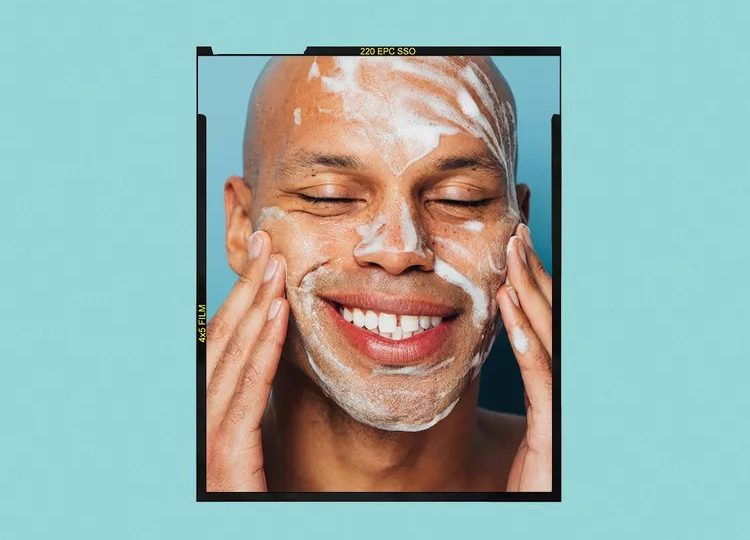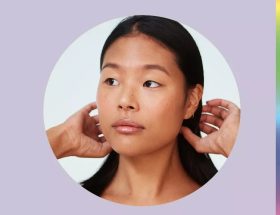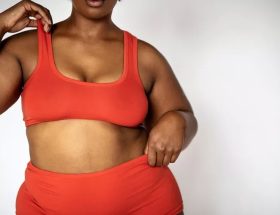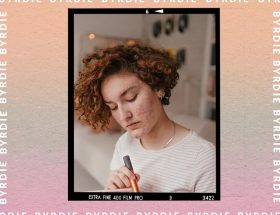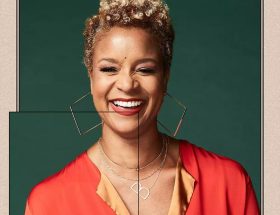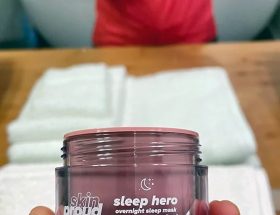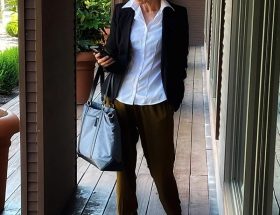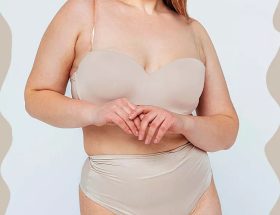Byrdie Boy The Dermatologist’s Guide to Treating Adult Acne in Men
One thing I took away from all those acne commercials on TV is that it’s mostly a teen thing. Guess what—it’s not. While similar in cause and symptoms to adolescent acne, adult acne is emerging as its own condition, and according to a recent study, it’s on the rise among both men and women. While the study revealed a higher percentage of cases in women, when it comes to adult acne, men, in particular, can be prone to the condition.
Whether you’ve had acne all your life or are getting your first bout with blemishes well into adulthood, you’ll be glad to know there is plenty you can do about it. To help us understand the causes behind adult acne men face as well as how to manage it, we talked to one of today’s top dermatologists to get their expert opinion on both the facts and the fixes.
01
What Is Adult Acne?
According to the National Institutes of Health, “Acne is a common skin condition that happens when hair follicles under the skin become clogged. Oil and dead skin cells plug the pores, and outbreaks of lesions (often called pimples or zits) can happen. Most often, the outbreaks occur on the face but can also appear on the back, chest, and shoulders.”
The article even touched upon the belief that acne is a teen thing, stating that “for most people, acne tends to go away by the time they reach their thirties, but some people in their forties and fifties continue to have this skin problem.”
The difference between teen acne and adult acne comes down to cause and treatment, explains Dendy Engelman, MD, a board-certified dermatologist at the Shafer Clinic. “Teenagers usually experience more acne because of hormone fluctuations in their changing bodies, which can cause increased oil production and subsequent breakouts. Adult acne can be caused by hormones (especially if they are on a medication or treatment that alters their natural balance of hormones), but more commonly, adult acne is due to stress, diet, personal habits, and individual predisposition.”
And like its younger cousin, adult acne can also show up anywhere on the body, especially in areas that tend to be sweaty and moist like the face, arms, shoulders, and back.
02
Causes and Prevention of Adult Acne in Men
When it comes to adult acne men face in particular, Engelman says, first and foremost, hormones are the name of the game. “The male body produces higher levels of testosterone (compared with women), which is linked to oil production in the sebaceous glands, leading to more oily skin and clogged pores.” But it’s our lifestyle choices as adults that can play a role in the formation of adult acne that men face as well, from stress to grooming habits.
Like facial hair. Beards and mustaches can act as a trap for acne-causing bacteria and oil, Engelman said. Plus, the products we use may not be appropriate for our skin. “Men tend to use harsh cleansing and scrubbing products, which strip the skin of natural oils and weaken the skin barrier, putting them at greater risk of developing acne. And when acne is present, they don’t go through the necessary steps to get rid of it in a safe, effective way.”
Safe and effective are the key words here, as many of us, upon experiencing a crop of blemishes in our adult years, would head to the acne aisle at the drugstore and layer on harsh, drying ingredients like we did in our teens—back when our skin was way more resilient. Or using one of the many 3-in-1 type cleansers marketed to men nowadays that are fine for our bodies but have no business anywhere near our faces.
Treating adult acne in men comes down to using the right products packed with safe, gentle, and effective ingredients with an anti-aging twist. Below are Engelman’s suggestions for morning and nighttime skincare routines:
03
mends using a cleanser with salicylic or glycolic acid to help slough away dead skin cells that could clog pores, preventing breakouts before they start. There are plenty out there today that are as gentle as they are tough on breakouts, such as La Roche Posay Effaclar Medicated Gel Cleanser, which contains both salicylic acid and skin-soothing glycerin.
Tone (Optional)
Engelman suggests a clarifying toner that contains salicylic or glycolic acid to help further relieve congestion or breakouts. However, doubling up on these ingredients just after cleansing could lead to excess dryness, so only tone if your skin can tolerate it.
Apply Eye Cream
As a product that’s synonymous with adulthood, eye cream is a daily must, but if you’re dealing with adult acne, stay away from anything too rich and occlusive and instead opt for a lightweight, gel-type eye treatment packed with powerful hydrators like hyaluronic acid, such as Neutrogena Hydro Boost Eye Gel-Cream.
Moisturize
Moisturization is still an essential step for the adult acne–afflicted, as it helps maintain healthy barrier function and lock in essential moisture. Keep it light, such as Cetaphil Oil-Free Hydrating Lotion. For an added anti-aging and anti-acne boost, Engelman also recommends layering a vitamin C serum underneath, like Glo Skin Beauty C-Shield Anti-Pollution Drops.
Apply SPF
Forget every myth you’ve ever heard about the sun being beneficial for acne. It never was and it never will be. Engelman recommends an oil-free sunscreen to keep skin safe without clogging pores, like Glo Skin Beauty Oil Free SPF 40+.
04
Nighttime Skincare Routine
Washing your face before going to bed is a must, Engelman says, whether or not you suffer from adult acne. At night, our skin goes into “healing mode,” so she suggests adding spot treatments and chemical exfoliants to your routine to help heal and prevent active adult acne.
Cleanse
You can use the same cleanser as in the morning, but if you tend to wear makeup during the day, Engelman recommends double cleansing, starting with an oil cleanser to remove impurities without stripping the skin, such as Elizabeth Arden Ceramide Replenishing Cleansing Oil. Then you can follow with your regular cleanser or—if you find it too irritating to use after double cleansing—a milder cleanser.
Tone (Optional)
As we said above, this step is completely up to you—only tone if you’re sure it won’t over-dry skin.
Exfoliating Treatment
Engelman says regular treatments using chemical exfoliants are great for everyone as they promote cell turnover, purifying skin, and unclog pores—all of which are vital to healing and preventing adult acne in men . She recommends the Ambari Beauty Gold Profection22 Mask, which packs a heavy dose of glycolic acid to resurface and refine skin.
Apply Eye Cream
Like in the morning, use a lightweight, hydrating eye cream that won’t clog pores.
Spot Treat
With no makeup or SPF to get in the way at night, Engelman recommends focusing on problem areas with targeted spot treatments containing active ingredients such as salicylic acid, benzoyl peroxide, like Humane Acne Spot Treatment Gel, or adapalene, like Differin Gel, which should be used all over the face.
Moisturize
At night, you’ll want to use a light moisturizer full of hydrating ingredients like hyaluronic acid to help maintain skin’s moisture barrier, as well as vitamins, antioxidants, and extracts that can aid in the fight against adult acne. Choose a formulation without SPF, such as Paula’s Choice Water-Infusing Electrolyte Moisturizer.
05
Other Considerations
Engelman points out that the adult acne men experience could be a sign of other underlying health conditions, including more severe hormonal imbalances, as well as unhelpful environmental factors such as unclean air or something in the water you’re drinking. If you’re experiencing more than just a few pimples here and there, or notice that the problem persists beyond a couple of weeks, it may be worth seeing a dermatologist to get to the bottom of it.
